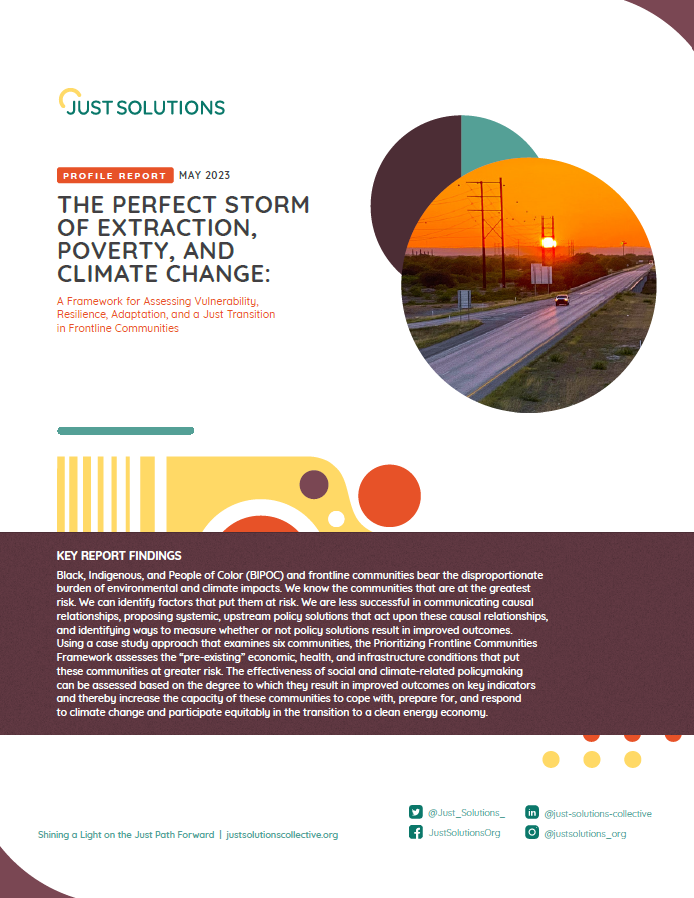Black, Indigenous, and People of Color (BIPOC) and frontline communities bear the disproportionate burden of environmental and climate impacts. We know the communities that are at the greatest risk. We can identify factors that put them at risk. We are less successful in communicating causal relationships, proposing systemic, upstream policy solutions that act upon these causal relationships, and identifying ways to measure whether or not policy solutions result in improved outcomes. Using a case study approach that examines six communities, the Prioritizing Frontline Communities Framework assesses the “pre-existing” economic, health, and infrastructure conditions that put these communities at greater risk. The effectiveness of social and climate-related policymaking can be assessed based on the degree to which they result in improved outcomes on key indicators and thereby increase the capacity of these communities to cope with, prepare for, and respond to climate change and participate equitably in the transition to a clean energy economy.
Key Findings
- These frontline communities are where they are today because of public policy choices made and actions taken in the past.
- Based on the indicators examined, none of these communities are adequately prepared to meet their day-to-day needs as they contend with climate change or to respond to a natural disaster, public health emergency, or economic crisis.
- Despite the difficult conditions they face, they all have community strengths, demonstrated adaptive capacity and resilience, and an innovative spirit when faced with adversity. However, in the absence of effective policy change to improve outcomes, increase resources, and prioritize their needs, community assets will be further tested by climate change, conditions will likely worsen, and these communities will risk being left out of a just transition.
- There are policies that could be adopted to improve community conditions, increase adaptive capacity and resilience, and ensure a just transition.
- We will know whether or not public policies are working to bring about climate justice and a just transition based on the direction of key indicators in frontline communities.
